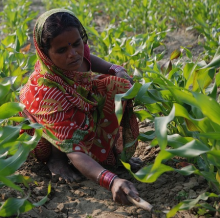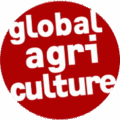
Organic farming continues to rise across the globe. A total of 43.7 million hectares were farmed organically at the end of 2014, representing a growth of almost 0.5 million hectares compared to the previous year. These are the latest figures of the statistical yearbook “The World of Organic Agriculture” published by the Research Institute of Organic Agriculture (FiBL) and IFOAM. The yearbook collects data on 172 countries reporting organic farming activities. Australia has the largest acreage of organically farmed land with 17.2 million hectares, of which 97% are used for grazing, followed by Argentina with 3.1 million hectares and the United States with 2.2 million hectares. Around 11.6 million hectares or more than a quarter of organically farmed land is in Europe. The three countries with the largest share of organic agricultural land of their total farmland are the Falkland Islands (36.3%), Liechtenstein (30.9%) and Austria (19.4%). But also Sweden, Estonia, Samoa, Switzerland, São Tomé e Príncipe, Latvia, the Czech Republic and Italy are among the countries with more than 10% of organic agricultural land. According to the report, there were 2.3 million organic farmers in 2014. Forty per cent of the world’s organic producers live in Asia, followed by Africa (26%) and Latin America (17%). As in previous years, the countries with most organic producers were India (650,000), Uganda (190,552) and Mexico (169,703). Consumer demand for organic products is also increasing across the globe. Global retail sales of organic food and drink reached 80 billion US dollars in 2014. The countries with the largest organic markets were the United States (27.1 billion Euros), followed by Germany (7.9 billion Euros), France (4.8 billion Euros) and China (3.7 billion Euros). The biggest market growth was registered in Sweden with organic sales up by more than 40 percent from the previous year. Switzerland continues to have the highest organic per capita spending. The Swiss spent 221 Euros on organic products, 57 Euro more than consumers in Luxembourg. Considering the latest figures and the continuous and sustainable growth over many years, the organic movement can look confidently into the future, the foreword to the report concludes. (ab)
